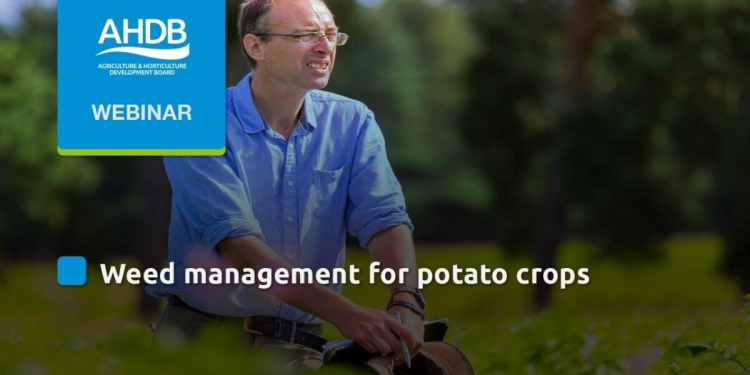Weeds can reduce the yield and quality of potatoes particularly where crop cover is reduced by weed competition
Why weeds cause losses
Potatoes are very susceptible to weed interference during two phases of growth
- early growth stages due to slow emergence
- at the end of the growing season when the canopy opens up
Some weeds, notably cleavers and bindweed, can grow though the crop and smother the canopy. Tall weeds such as fat hen, oilseed rape, creeping thistle, sowthistles and many grass weeds can emerge through the canopy, compete for nutrients, light and water and add to the weed seed bank for the future. Even weeds which do not emerge through the canopy can compete with the crop for nutrients if present in sufficient numbers.
Potatoes can be good competitors with weeds once crop canopy expansion begins and are often considered a “cleaning” crop in the rotation.

Weeds as sources of pest and disease problems
Certain stubby root nematodes transmit Tobacco Rattle Virus (TRV) which can result in spraing in potato tubers. TRV has a wide host range, including many arable weed species (e.g. field pansy, knotgrass, groundsel, shepherd’s purse and chickweed) and these can act as a reservoir for TRV infection of potato crops.
Managing weeds in potato crops
The weeds review commissioned in 2019, discusses control options in more detail, including non-chemical controls such as mechanical weeding.
Herbicides are still the main weed control option used in non-organic systems. The primary method is to use a residual herbicide programme pre-emergence, usually containing a contact herbicide component, followed up by a post-emergence herbicide application where necessary.
Prior to its withdrawal in 2019 diquat was widely used, mixed with a combination of residual herbicides. Linuron had been an important residual but its last year of use was 2018. In response to the loss of these actives, a series of replicated and demonstration trials were carried out on the SPot Farm network between 2016 and 2020 to investigate the effectiveness of new herbicides and spray programmes.
Optimising herbicide efficacy
To make the best of herbicide products stick to label recommendations. Generally residual herbicide efficacy is aided by application to damp rather than dry soil Care should be taken to ensure sprayers are set-up appropriately and herbicides applied near to the soil surface at slow speeds
Volunteer potatoes
Also known as groundkeepers, these are plants which develop from unharvested tubers (or tuber pieces). Plants may also develop from true potato seed, with certain varieties particularly prone to producing viable true seed, but these are smaller and less vigorous than those arising from tubers.
Volunteer potatoes as sources of pest and disease problems
Volunteers are a problem because they can be a reservoir of potato pest and disease problems such as PCN, aphid-transmitted viruses and late blight. There are tolerances for volunteer potatoes in seed potato production and numbers above the threshold can result in the crop being downgraded at inspection.
Volunteers are also an issue for non-potato crops, for example carrots and onions, where they are effectively weeds which can outcompete the actual crop. Potato volunteers can produce pea sized berries and if these are present in the harvested pea crop they result in crop rejection.
Research projects have looked for novel solutions for volunteer control in horticultural crops and at the use of maleic hydrazide (MH). This is applied to the growing potato crop as a foliar spray and acts as a sprout suppressant and so provides control of volunteers.

Managing volunteer potatoes
An integrated approach, across the rotation, will be the most effective route to manage volunteers. Factors to consider are
- application of MH to the potato crop
- desiccation and effective stolon detachment at harvest
- harvester set-up (settings and web sizes) to avoid cutting tubers and to minimize the number of small tubers or tubers pieces that are returned to the field
- if possible, avoid cultivation practices following potato crops that result in tubers being buried in the topsoil at depths where they are protected from hard frosts
- herbicide use in the following crop and/or pre-harvest of other crops, although no herbicides used to control volunteer potatoes will provide 100% kill









